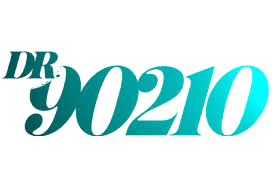What Most People Don’t Know About Revision Facelifts — Insights from Dr. Michelle Lee
If you’ve ever wondered, “What happens if my facelift didn’t turn out the way I hoped?” or “Can you get a second facelift?” — you’re not alone.
As a Harvard-trained, board-certified plastic surgeon in Beverly Hills, I specialize in natural-looking facelifts and complex revision facelift surgery. Over the years, many patients have come to me after having had a prior facelift elsewhere. Here’s what I’ve learned — and what I wish every patient knew.
1. Most Patients Don’t Know What Kind of Facelift They Had the First Time
A common question I get as a facelift revision specialist is: “What type of facelift did I have?” The truth is, many patients don’t actually know.
In today’s aesthetic landscape, facelift procedures are often branded — “mini lift,” “signature lift” — but these labels rarely tell us what was actually done underneath the skin. During revision surgeries, I often discover that techniques believed to be deep plane lifts were actually more superficial. The only way to truly assess what was done is through careful intraoperative dissection — something only a skilled facelift surgeon can evaluate in real-time.
2. Neck Sagging Is the #1 Reason for Facelift Revisions
If you’re searching “Why does my neck look saggy after a facelift?” — you’re not alone. The most common reason patients seek me out for revision is persistent or recurrent neck laxity.
There are two main causes:
- Skin quality and elasticity — If your skin lacks collagen or elastin, it won’t hold as long.
- Insufficient deep tissue lifting — A proper lift requires addressing the SMAS layer and facial ligaments — not just tightening the skin.
As a specialist in facelift and neck lift techniques, I always ensure the foundation is lifted — not just the surface.
3. Revision Facelifts Require More Skill, Experience, and Precision
Revision facelift surgery is not for beginners. When patients search for “best plastic surgeon for revision facelift in Beverly Hills,” they’re often looking for someone who understands the complexity and risk involved:
- Scar tissue makes dissection more difficult as the tissues are scarred together.
- Facial nerve branches is at a higher risk for injury because it is often encased in scar. Studies have shown that revision facelifts have a higher risk of nerve injury compared to the first facelift.
- There’s a higher risk poor scarring around the ear and creating distortions such as the pixie ear if there is too much tension around the wound and the closure isn’t meticulously handled.
As a surgeon who performs revision facelifts regularly, I approach each one with a balance of technical precision and aesthetic sensitivity.
Final thoughts:
- “Is it safe to get a second facelift?”
✔️ Yes, but only in the hands of an expert with experience in revision surgery. - “How long should I wait before a revision facelift?”
✔️ I typically recommend 12–18 months after your initial surgery. - “Who is the best facelift surgeon in Beverly Hills?”
✔️ Patients travel to Dr. Michelle Lee for her natural results, refined approach, and specialization in complex facelifts and secondary facial surgeries.
Why Patients Choose Dr. Michelle Lee for Facelifts and Revisions
- 🧬 Harvard-trained, board-certified
- 🏆 Featured on E! Network’s Dr. 90210
- ✨ Known for natural, undetectable facelift results
- 📍 Located in Beverly Hills, CA
Whether it’s your first or your second lift, your face deserves expert care. Revision facelifts aren’t just about fixing what went wrong — they’re about restoring confidence, dignity, and harmony.
Book a Private Consultation with Dr. Michelle Lee
If you’re considering a revision facelift or want a second opinion, schedule a consultation with Dr. Michelle Lee, facelift expert in Beverly Hills.
📞 Call 310-400-6180
📩 Or request a consultation link to booking.




